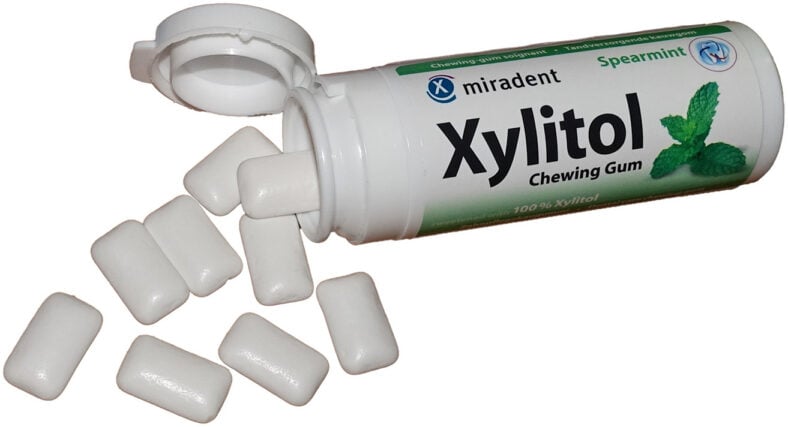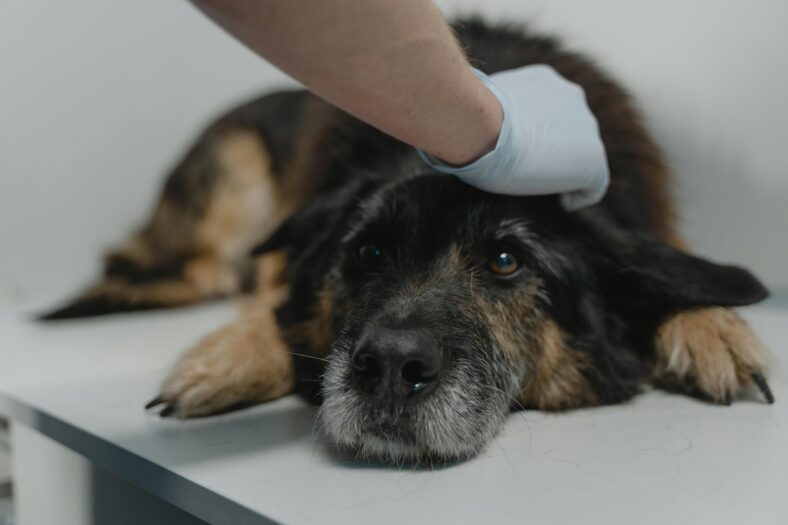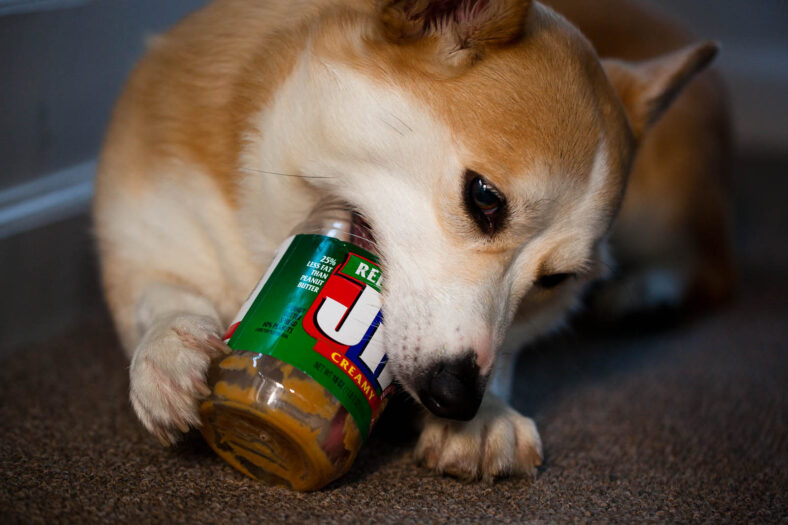Bull Mastiff Puppy Rushed to ER After Eating Gum—The Hidden Danger of Xylitol Poisoning in Dogs
Billy, a 6-month-old Bull Mastiff was recently rushed to the emergency vet after ingesting several pieces of sugar-free chewing gum containing xylitol—a common sweetener that is highly toxic to dogs.
@best_boy_billy Varning #poisoningdog #beware #xylitolawareness #xylitolpoisoningindogs ♬ Reflections – Gabriel Albuquerqüe
The gum had been accidentally left within reach, and like many curious puppies, Billy didn’t hesitate to eat it. Veterinarians later confirmed he was suffering from xylitol poisoning, a life-threatening condition that can cause rapid drops in blood sugar and severe liver damage.
“We rushed him to the emergency room. We got there in less than 30 minutes. Billy was given medicine to make him vomit everything…..the chewing gums came up little by little. In that short time, his liver was affected by the poisoning from xylitol. Billy had to stay at the animal hospital overnight…..Be careful of your dogs. Things that aren’t poisonous to us can be deadly to them,” Billy’s owner captioned in a TikTok video.
Thankfully, Billy survived and is fairing on well.
Xylitol Poisoning in Dogs: Everything You Need to Know
Also popularly referred to as birch sugar or wood sugar, xylitol is a natural sugar alcohol mostly derived from corncobs or hardwood trees like the birch tree. Once extracted, it’s processed as a sugar substitute to sweeten a wide range of popular food and non-food items.
Xylitol is slightly lower in calories compared to ordinary sugar, making it a preferred sweetener for items such as sugar-free chewing gums, breath mints, candy, baked goods, mouthwash, toothpaste, some peanut butter brands, some over-the-counter medications like cough syrup, some chewable vitamins and dietary supplements, among many other products. It’s worth mentioning that most products labeled “sugar-free” or “low sugar” often contain xylitol.
Xylitol is harmless to humans. However, it is highly toxic to dogs, even in small amounts.
Here’s why…..
When it comes to humans, xylitol ingestion has no notable effects on insulin production.
Unlike in humans, xylitol is rapidly absorbed into a dog’s bloodstream. This then triggers their pancreas to overproduce insulin in an effort to control the sudden spike in blood sugar. Ultimately, the excess insulin production leads to a dangerous drop in blood sugar levels.
The immediate effect of xylitol poisoning in dogs is usually hypoglycemia (low blood sugar levels). Without prompt veterinary attention, xylitol toxicity causes acute liver damage.
“The problem is, even a small amount of xylitol can trick a dog’s body into thinking it’s real sugar and release a massive amount of insulin. This insulin release can cause severe life-threatening hypoglycemia (low blood sugar) and even liver failure,” Dr. Lisa Lippman of Bond Vet explains. “What many people don’t know is that “birch sugar” or “birch sap” is the new label on the block that really is just a made-up alternative marketing word for xylitol.”
7 Common Clinical Signs of Xylitol Poisoning in Dogs
According to the MSD Veterinary Manual, the life-threatening symptoms of xylitol poisoning in dogs may appear as early as thirty minutes after consuming xylitol or 12-18 hours later in some cases.
But it’s worth noting that just because the symptoms haven’t developed immediately doesn’t mean that the ingested xylitol isn’t causing damage inside your dog’s body. For this reason, it’s crucial to see your vet or contact the animal poison control center if you suspect your pup might have eaten a product containing xylitol even when they aren’t showing any symptoms.
That said, here are seven common xylitol poisoning symptoms in dogs:
- Vomiting
- Lethargy
- General body weakness
- Loss of coordination
- Seizures
- Collapse
- Coma
“My 7-month-old Doberman girl ate a large amount (7 sticks) of xylitol-containing chewing gum this morning out of my husband’s bag….she was fine all day, about 12 hours, then violently and copiously vomited all over the floor to the point we started worrying,” posted user @Lababy91 in a Reddit discussion on xylitol toxicity in dogs.
How Much Xylitol Is Toxic to Dogs?
Research shows that a dog’s size has a huge impact on the extent of damage that xylitol will cause in their body. According to these findings, as little as 0.1 grams of xylitol per kilogram of your dog’s body weight can lead to hypoglycemia.
To paint a clear picture, that means:
- For a small dog weighing 20 kg, just 2 grams of xylitol is enough to cause hypoglycemia.
- For a big dog weighing 50 kg, ingesting 5 grams of xylitol will cause hypoglycemia.
Liver damage often arises when a dog ingests 0.5 grams of xylitol per kilogram of their body weight. That means for a pup weighing 20 kgs, ingesting 10 grams of xylitol puts them at risk of acute liver damage.
In other words, smaller dogs are at a higher risk of severe xylitol poisoning compared to large dogs.
Treatment of Xylitol Poisoning in Dogs
If your dog ingests xylitol, you should seek veterinary attention immediately. It’s not advisable to induce vomiting on your own unless instructed by your vet.
Treating xylitol poisoning at home with natural products such as activated charcoal is also not recommended. In fact, findings in the MSD Veterinary Manual show that activated charcoal isn’t effective in addressing xylitol poisoning.
Normally, the treatment interventions for xylitol poisoning in dogs include inducing vomiting, stabilizing blood sugar levels, and managing liver damage, if present. Unfortunately, severe liver damage caused by xylitol can lead to death. Early treatment is key to increasing the chances of a good prognosis.
Xylitol Poisoning in Dogs FAQs
1. What is xylitol poisoning in dogs, and why is it dangerous?
Xylitol poisoning in dogs occurs when they ingest xylitol-containing products, such as chewing gums, baked goods, or peanut butter that use this sugar substitute. Even a small amount can cause a dangerous drop in blood sugar, leading to life-threatening conditions like seizures, liver damage, and even death.
2. What are the symptoms of xylitol poisoning in dogs?
The symptoms of xylitol poisoning in dogs can appear within minutes to hours of ingestion and include vomiting, weakness, lack of coordination, tremors, seizures, and collapse. Severe cases can result in liver enzyme abnormalities, leading to liver damage.
3. What is the xylitol poisoning in dogs timeline?
The xylitol poisoning in dogs timeline varies depending on the amount ingested. Signs of xylitol poisoning in dogs can appear within 10 to 60 minutes after ingestion, typically starting with vomiting and a rapid drop in blood sugar levels. More severe complications, like liver damage, may take 12 to 24 hours to develop.
4. How long does xylitol poisoning last in dogs?
The duration of xylitol poisoning in dogs depends on how much xylitol was ingested and how quickly treatment is given. Mild cases with early intervention may recover in 24 to 48 hours, while severe cases, especially those leading to liver damage, can have long-term effects and require extended veterinary care.
5. How long does it take for xylitol poisoning in dogs to show symptoms?
Pet parents often ask, “How long does it take for xylitol poisoning in dogs?” Symptoms can begin within 10-30 minutes as the dog’s blood sugar levels drop rapidly. However, clinical signs of liver enzyme abnormalities may not appear until 12-24 hours later.
6. What are the first signs of xylitol poisoning in dogs?
The first signs of xylitol poisoning in dogs include vomiting, lethargy, and disorientation due to hypoglycemia (low blood sugar). If left untreated, it can escalate to tremors, seizures, and even coma. Early recognition of symptoms of xylitol poisoning is crucial for treatment.
7. How to treat xylitol poisoning in dogs at home?
If you suspect xylitol poisoning in dogs, do not attempt to induce vomiting without veterinary guidance. Call the ASPCA Animal Poison Control Center or a local poison control center immediately. Fast veterinary treatment is essential, as at-home remedies are not reliable in cases of poisoning in dogs.
8. Can xylitol in peanut butter cause xylitol poisoning in dogs?
Yes! Some brands of peanut butter contain xylitol as a sugar substitute, which can lead to life-threatening poisoning in dogs. Always check labels for xylitol-containing products before giving your pet any human food.
9. What should I do if my dog ate a product containing xylitol?
If your dog ingested a product containing xylitol, contact a veterinarian or the ASPCA Animal Poison Control Center immediately. Do not wait for xylitol poisoning symptoms in dogs to appear, as early treatment can prevent severe liver damage and a dangerous drop in blood sugar levels.
10. Can baked goods cause xylitol poisoning in dogs?
Yes, some baked goods use xylitol as a sugar substitute, which makes them dangerous for dogs. Always check ingredients before sharing human food, as even a small bite of a xylitol-containing product can lead to life-threatening poisoning in dogs.






